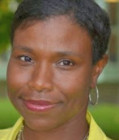Mobilization for Voting Rights in a Northeastern City
This year marks the 50th anniversary of the landmark Voting Rights Act of 1965, passed at a time when violence and overt forms of discrimination prohibited African Americans and other minorities from exercising their right to vote. A half century later, new barriers are being constructed, as dozens of states put in place cumbersome requirements that must be met by people eligible to vote before they can actually cast ballots. Openly racial justifications are never offered for new procedures such as requiring photo identifications or setting up voter registration and balloting places far from the homes of poor, minority people. But the new barriers are arguably more dangerous because they are below the radar. Tellingly, barriers to voting by minorities and low-income people exist even in liberal New England towns, where nonprofit and community organizations are mounting new campaigns to ensure that citizens’ voting rights are not being violated. Students at Salem State University got involved in one such campaign in the city of Salem, Massachusetts.
Minorities and Voting in Salem
A New England city with 42,544 residents, Salem includes a large minority population. The Latino and Hispanic community is the largest minority with 15.6% of all city residents. Although sizeable, this part of Salem’s population is often overlooked, because most of its members live in a neighborhood known as the Point, where residential density is 2.5 times the city’s average. Two thirds of Point residents are Latino and Hispanic, including many immigrants from the Dominican Republic and other Caribbean islands; and almost three of every ten Point residents have incomes below the poverty line. Spanish is the predominant language. Non-Pointers often hold negative stereotypes of the neighborhood, speaking about it as “bad” or “dangerous.”
In 2009, authorities in the city of Salem consolidated voting precincts, saying that they needed to curb the costs of administering elections. As a result, the new polling location for residents of the Point neighborhood was several miles away. The change to a much less accessible location led to a significant decline in voter turnout from this area in the 2009 municipal election, with only 11% of the neighborhood’s previously registered voters – 79 people out of 718 – casting a ballot.
A New Voter Education Project
Determined to reverse the decline in voter participation, the local Community Development Coalition joined together with the Point Neighborhood Association to gather facts, mount a voter education campaign, and pressure city authorities to restore a polling location convenient for neighborhood residents. Students at Salem State University participated in this effort, as an experiment in real-world service learning. Student volunteers from courses in political science and sociology contributed to the community effort, engaging in door-to-door canvassing, phone banking, and Election Day voter mobilization. Their efforts contributed to a record high turnout in 2012, and by 2014 the city decided to restore a polling location to the Point neighborhood. In the process of participating in this community effort, students learned about voting rights issues and in many cases changed their personal views on related issues.
Understanding the Issues in a New Light
As the campaign set out to make sure citizens were informed of their voting rights and to help people exercise those rights, Salem students, their teachers, and community volunteers discovered in very specific ways how barriers to voting operate. They learned, for example, about phone calls that told people the wrong day to vote, and instances where election workers required would-be voters to fill out provisional ballots because the documentation those voters presented on Election Day was not deemed proper.
In the Salem voter campaign, partnerships formed by organizations, community members, and advocacy groups to promote political change and collective action helped to shift attitudes for all concerned. For participants in this organized community effort, voting came to seem less an issue of simple individual choice, and more a matter of ensuring collective voice for disenfranchised groups and removing barriers to participation. Previously unaware residents learned about barriers to exercising their voting rights and gained new insights into why voting matters to their community. And in a city whose growing ethnic and racial diversity mirrors trends across the country, volunteers learned that bilingual outreach is an optimal way to reach more residents and encourage their engagement in the democratic process.
Take-Away Lessons for Future Voter Education Efforts
The Salem campaign happened in a distinctive place and time, of course, but it suggests a series of lessons for similar efforts in many other communities where voting is sporadic and overt or subtle barriers discourage participation:
- An organized community movement can take shape – and score a win – around a straightforward goal like restoring convenient polling locations to places from which they have been removed.
- Voting reforms can be pushed steadily forward through collaborations involving community members, advocacy groups, and amenable local government officials.
- Voting rights campaigns and collaborations can track groups and organizations that purposely misinform poor, immigrant, and minority communities; and they can inform communities about illegal actions that undermine voter access and election fairness.
- Get out the vote campaigns can make the process more inviting to all – not only by contacting people door-to-door to encourage voter registration and turnout, but also by insuring the presence of bilingual workers at the polls to help people navigate the final steps to submitting their ballots.
- Involving students can add person-power and, at the same time, raise awareness about voting rights and political equality for the next generation.
Read more in Jennifer Jackman, Tiffany Gayle Chenault, and Joy Winkler, “Bringing Organization Back In: Perspectives on Service-Learning, Community Partnership and Democratic Thinking in a Voter Engagement Project.” Partnerships: A Journal of Service-Learning & Civic Engagement 6, no.1 (2015).
